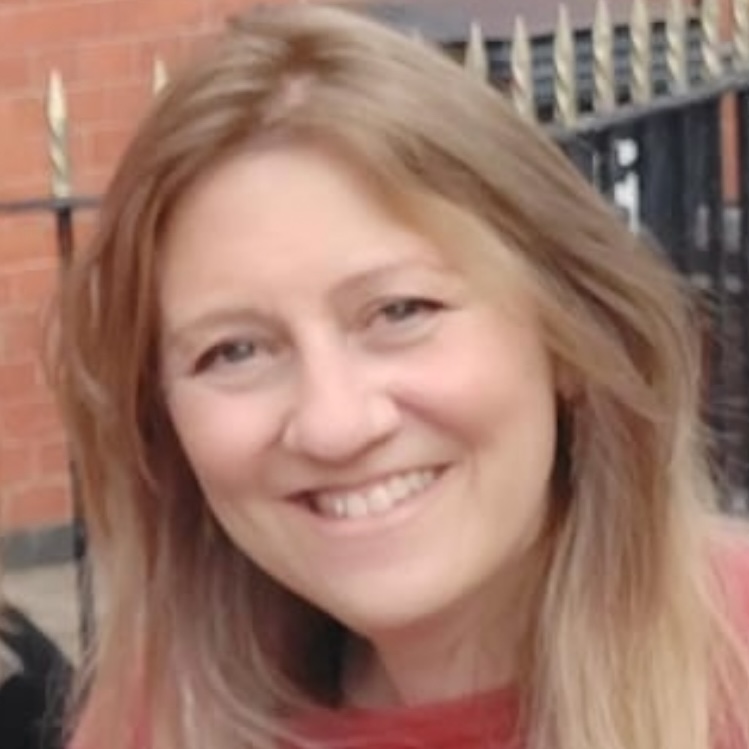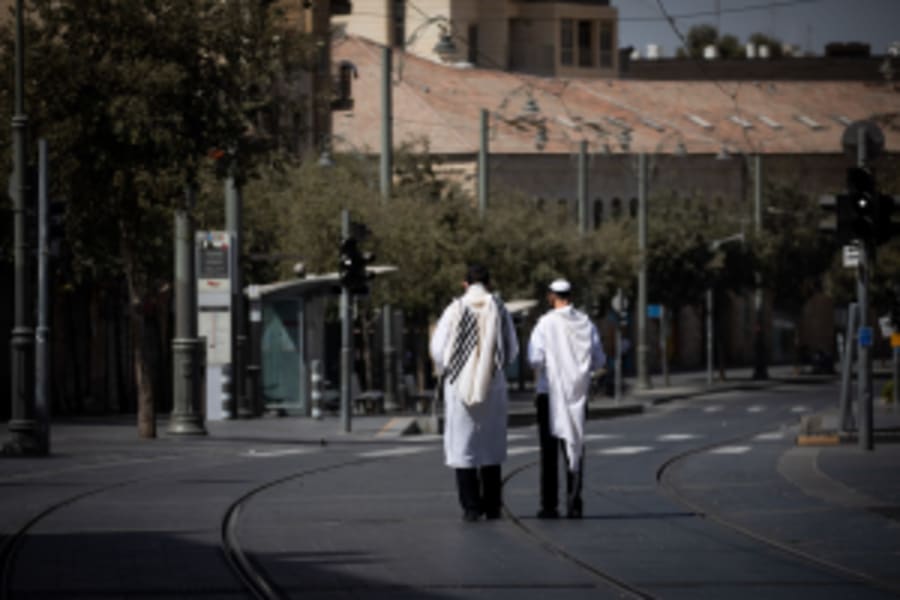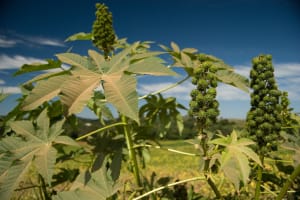Ancient clay seal with biblical name found near Temple Mount in Jerusalem
![Temple Mount Sifting Project archaeologist Mordechai Ehrlich holds a First Temple period clay sealing reading “Yed[a‛]yah (son of) Asayahu” found in July 2025. (Photo: Temple Mount Sifting Project)](https://res.cloudinary.com/hb0stl6qx/image/upload/w_900,c_scale,q_auto,f_auto,dpr_auto/v1754066993/AIN/MORDECHAI-EHRLICH-1024x640.jpg)
It may be small, but it is mighty. A tiny artifact in remarkable shape has just been discovered by the Temple Mount Sifting Project in Jerusalem, according to their announcement on Tuesday. A seal bearing an ancient Hebrew inscription, with all the letters intact, appears to make reference to an official named Asaiah, who served King Josiah, the sixteenth king of Judah mentioned in the biblical books of II Kings and II Chronicles.
The clay seal from the First Temple period bears the inscription in Paleo-Hebrew, “Belonging to Yed[a‛]yah (son of) Asayahu.”
“This is only the second time since the Temple Mount Sifting Project began over 20 years ago that we’ve uncovered a sealing with such a complete inscription – nearly every letter is clearly legible,” archaeologist Zachi Dvira told the Times of Israel.
![Temple Mount Sifting Project archaeologist Mordechai Ehrlich holds a First Temple period clay sealing reading “Yed[a‛]yah (son of) Asayahu” found in July 2025. (Photo: Temple Mount Sifting Project)](https://res.cloudinary.com/hb0stl6qx/image/upload/v1754066991/AIN/Bulla-300x480.png)
“We usually do not go public with new finds so quickly,” said Dvira, who has been co-directing the project alongside Dr. Gabriel Barkay. “However, in this case, the artifact was very recognizable, and Dr. Anat Mendel-Geberovich, who works in our lab, is one of the leading experts in ancient Hebrew script. So we decided to move forward, also because we felt it was very significant that the sealing was found just before Tisha B'Av.”
Saturday night is the beginning of Tisha B’Av, the ninth day of the Jewish month of Av: the saddest date in the Jewish calendar. It is the culmination of the time of “dire straits,” a time of many terrible calamities that have happened to the Jewish people. It is the date that not one but both temples were destroyed, the first burned down by the Babylonians in 586 B.C. and the second by the Romans in 70 A.D. Now finds like this seal bring a measure of comfort as they testify to the deep Jewish roots in Jerusalem providing tangible evidence of the rich history.
The tearing of clothes in dismay is not inappropriate for Tisha B'Av, so the message of the biblical text the seal points to becomes all the more relevant: “When the king heard the words of the Book of the Law, he tore his clothes. And the king commanded Hilkiah the priest, and Ahikam the son of Shaphan, and Achbor the son of Micaiah, and Shaphan the secretary, and Asaiah the king's servant, saying, 'Go, inquire of the Lord for me, and for the people, and for all Judah, concerning the words of this book that has been found. For great is the wrath of the Lord that is kindled against us, because our fathers have not obeyed the words of this book, to do according to all that is written concerning us'” (2 Kings 22:11-13).
The parallel passage in 2 Chronicles 34:19-21 says almost exactly the same thing, word for word, as the priests present their own record (or chronicles) of the history of the Jewish people. The Hebrew name “Asaiah” mentioned on the coin can also be rendered “Asaiahu,” similar to the names of the prophets Isaiah and Jeremiah, which can be rendered either “Yeshayah or Yeshayahu” and “Yirimyah or Yirimyahu” respectively, with the extra letter representing the name of God. The use of the names helps date the seal to the sixth or seventh century B.C., along with the style of writing.
“The longer and shorter versions of the name were often used interchangeably,” Dvira explained. “The name Asayahu also appears on another clay sealing with the words ‘servant to the king,’ that was identified some 20 years ago… However,” he continued, “since the artifact came from the antiquity market, and not from an archaeological context, it is more difficult to be sure of its authenticity.”
“Obviously, we are not sure that the Asayahu mentioned on the sealing is the same that appears in the Bible,” said Dvira. “However, several such artifacts found in the area of the Temple Mount carry biblical names, and it does make sense, because these were not objects used by common people.”
King Josiah reigned in the second half of the 7th century B.C, matching the date of the seal, but it is not conclusive that the Asaiah on the seal is the one who served King Josiah. In the time of the first temple these clay seals or ‘bullae’ were commonly used to manage goods in storehouses, and prevent tampering. Dozens have been found in the temple area with names from the Bible.
The Temple Mount Sifting Project has found more than half a million artifacts over the years, with the help of over a quarter of a million volunteers sifting through buckets of dirt. It was archaeologist Mordechai Ehrlich who identified the tiny Asayahu bulla as part of this project, searching through what was supposed to be a bucket of bones.
“The artifact looked like a bone and had the color of a bone, but [Ehrlich] realized it was a clay object, and there was an inscription on it,” Dvira explained.
Special Reflectance Transformation Imaging (RTI) photography was used to identify the tiny object, and such developments in techniques and technology in the field has enabled experts to study objects much more easily, leading to an increase in the number of items successfully identified.
“Because of their small size, clay sealings are difficult to identify,” Dvira said. “In the past, most of the bullae came from the antiquity market, but as we developed new techniques to sift through massive amounts of dirt, more excavations have started to either employ our sifting services or carry out their own sifting. Now, there are maybe 10 or 20 times more known bullae found during controlled archaeological work than in the past.”
An academic article on the artifact will be published, but Dvira is already hunting for more. He expressed his hope for more volunteers to come and help with the gargantuan task of sifting endless buckets of soil for more treasures.
“I hope that next year, tourists from abroad will come back,” he said.
![Temple Mount Sifting Project archaeologist Mordechai Ehrlich holds a First Temple period clay sealing reading “Yed[a‛]yah (son of) Asayahu” found in July 2025. (Photo: Temple Mount Sifting Project)](https://res.cloudinary.com/hb0stl6qx/image/upload/v1754068237/F140310MA94_pr_xdtouv.jpg)
Is All Israel News’ faithful reporting important to you? Be part of it—help us continue by becoming a $5/month supporting partner.

Jo Elizabeth has a great interest in politics and cultural developments, studying Social Policy for her first degree and gaining a Masters in Jewish Philosophy from Haifa University, but she loves to write about the Bible and its primary subject, the God of Israel. As a writer, Jo spends her time between the UK and Jerusalem, Israel.
You might also like to read this:

















